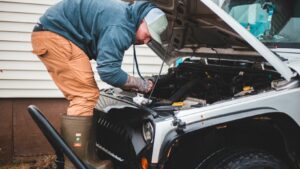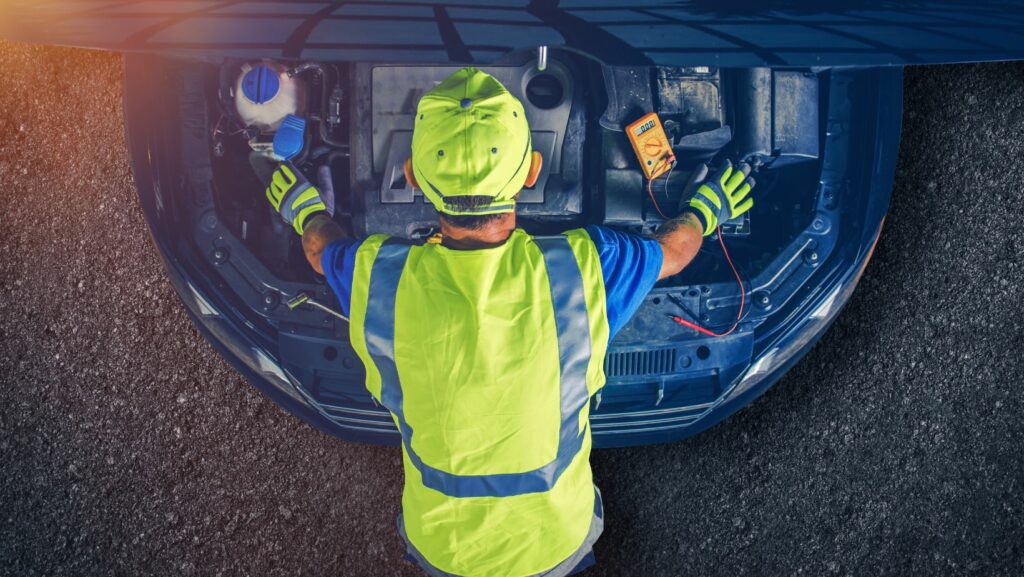DIY Car Maintenance Guide
- Empowerment Through Knowledge: DIY car maintenance enables vehicle owners to take control of their car’s upkeep, fostering independence and saving money on repairs.
- Essential Skills Development: Engaging in basic car maintenance builds valuable mechanical skills and confidence in handling vehicle issues.
- Cost-Effective: Performing routine maintenance tasks yourself eliminates labor costs, offering significant long-term savings.
- Regular Maintenance Tasks: Key DIY tasks include oil changes, tire rotations, and brake inspections, all crucial for extending vehicle lifespan and enhancing performance.
- Safety First: Proper personal safety gear and vehicle safety precautions are vital to prevent injuries and ensure a smooth maintenance process.
- Seasonal Considerations: Conduct seasonal maintenance checks to adapt your vehicle’s performance to varying weather conditions, ensuring optimal functionality year-round.

Maintaining a car doesn’t have to be a daunting task. With the right knowledge and tools, anyone can tackle basic maintenance and keep their vehicle running smoothly. A DIY car maintenance guide empowers car owners to take control of their vehicle’s health, saving money on costly repairs while enhancing their mechanical skills.
From oil changes to tire rotations, understanding the essentials of car care can extend a vehicle’s lifespan and improve performance. This guide will walk through practical tips and step-by-step instructions, making it easier for anyone to perform routine checks and repairs. Embracing DIY maintenance not only fosters confidence but also deepens the connection between driver and machine.
Understanding DIY Car Maintenance
DIY car maintenance empowers owners to manage their vehicle’s upkeep efficiently. This approach not only saves money but also enhances mechanical skills and fosters a deeper connection with the vehicle.
Benefits of DIY Car Maintenance
- Cost Savings: Performing maintenance tasks at home eliminates labor costs associated with professional services, allowing significant savings over time.
- Skill Development: Engaging in DIY maintenance builds valuable skills. Owners learn about their vehicle’s components and how to troubleshoot issues.
- Enhanced Control: Managing maintenance schedules personally ensures timely servicing, which can prevent severe problems down the road.
- Personal Satisfaction: Completing maintenance tasks generates a sense of accomplishment and boosts confidence in handling vehicle issues.
- Lack of Expertise: Many believe that only trained mechanics can perform car maintenance effectively. In reality, basic tasks can be easily learned with research and practice.
- Time-Consuming: Some assume DIY maintenance requires extensive time. However, many tasks, like oil changes or tire rotations, can often be completed in under an hour.
- Need for Special Tools: There’s a misconception that specialized tools are necessary for all maintenance tasks. Basic tools, like wrenches and screwdrivers, suffice for most jobs.
- Increased Risk of Damage: Concerns exist about damaging the vehicle during DIY maintenance. With proper guidelines and caution, these risks are minimal.
Essential Tools for Car Maintenance
Having the right tools simplifies DIY car maintenance. A well-equipped toolkit ensures efficiency and effectiveness during maintenance tasks.
Basic Tool Kit
A basic tool kit covers the fundamental needs for car maintenance. Key items include:
- Wrenches: A combination of adjustable and socket wrenches aids in various bolt sizes.
- Screwdrivers: A set of flathead and Phillips screwdrivers tackles different screws.
- Pliers: Needle-nose and standard pliers help grip and manipulate small parts.
- Jack and Jack Stands: These are necessary for safely lifting the vehicle during tire changes or inspections.
- Oil Filter Wrench: This tool simplifies the removal of oil filters during oil changes.
- Torque Wrench: This tool ensures bolts are tightened to manufacturer specifications, preventing damages.
- OBD-II Scanner: An on-board diagnostic scanner reads error codes and helps identify issues within the engine.
- Brake Bleeder Kit: This kit facilitates the process of bleeding brake lines to remove air bubbles.
- Timing Light: A timing light ensures proper ignition timing, improving engine performance.
- Battery Tester: This tool assesses battery charge level and overall health, essential for avoiding starting issues.
Key DIY Car Maintenance Tasks
DIY car maintenance includes essential tasks that every vehicle owner can handle. Regular upkeep not only enhances performance but also extends a car’s lifespan.
Oil Change
Changing the oil is a fundamental maintenance task. Regular oil changes keep the engine lubricated and functioning efficiently. Follow these steps:
- Gather necessary tools: an oil filter wrench, a socket wrench, an oil catch pan, and fresh oil.
- Lift the vehicle using a jack and secure it with jack stands.
- Locate the oil drain plug, remove it, and allow old oil to drain completely into the catch pan.
- Replace the oil filter using the oil filter wrench.
- Reinstall the drain plug and pour fresh oil through the engine’s fill cap.
- Start the engine and check the oil level with the dipstick.
Perform oil changes every 5,000 to 7,500 miles or as recommended by the vehicle manufacturer.
Tire Rotation
Tire rotation ensures even tire wear, promoting traction and extending tire life. Always rotate tires every 5,000 to 8,000 miles. Follow these steps:
- Gather necessary tools: a lug wrench, a jack, and jack stands.
- Lift the vehicle using the jack and secure it with jack stands.
- Loosen the lug nuts on each wheel but do not remove them yet.
- Remove the front tires and position them at the rear, switching sides.
- Remove the rear tires and position them at the front, also switching sides.
- Reinstall and tighten the lug nuts in a crisscross pattern to ensure even pressure.
Check tire pressure after rotation to ensure proper inflation.
Brake Inspection
Inspecting brakes is critical for safety. Regular checks can prevent costly repairs and ensure safe driving. Follow these steps:
- Gather tools: a socket wrench, a jack, and a flashlight.
- Lift the vehicle using a jack and secure it with jack stands.
- Remove the tire to access the brake assembly.
- Inspect the brake pads for thickness; they should be at least 1/4 inch.
- Check the brake rotors for grooves or wear.
- Look for leaks in the brake lines and ensure the brake fluid level is adequate.
- If any components require replacement, consult the vehicle’s manual for specific instructions.
Perform brake inspections every 10,000 to 15,000 miles or if there are any signs of issues.
Seasonal Maintenance Tips
Seasonal maintenance ensures a vehicle functions optimally throughout different weather conditions. Proper care during seasonal transitions can prevent issues and prolong vehicle lifespan.
Spring and Summer Prep

- Inspect the Cooling System: Check coolant levels and look for leaks. Replace coolant if necessary to prevent overheating.
- Test the Battery: Heat can impact battery performance. Clean terminals and check the battery’s charge and lifespan.
- Change the Oil: Fresh oil improves engine performance. Follow the manufacturer’s recommendations for oil type and change frequency.
- Examine the Tires: Inspect tire pressure and tread depth. Rotate tires for even wear and ensure proper inflation for safety and efficiency.
- Clean the Air Filter: A clean air filter improves fuel efficiency. Replace if dirty for optimal engine performance.
- Check the Wiper Blades: Replace worn wiper blades to enhance visibility during rain and snow.
- Inspect the Fluids: Ensure antifreeze, brake fluid, and windshield washer fluid are at appropriate levels to handle colder temperatures.
- Test the Heating System: A functioning heater is vital for comfort and safety. Ensure it heats efficiently before cold weather sets in.
- Examine the Tires: Switch to winter tires for better traction in snow and ice. Check tire pressure, as it decreases in colder conditions.
- Inspect the Lights: Ensure all headlights, brake lights, and turn signals function properly for increased visibility during darker days.
Safety Considerations in DIY Maintenance
Safety remains a top priority during DIY car maintenance. Proper precautions safeguard both the individual and the vehicle.
Personal Safety Gear
Wearing the right personal safety gear is essential. Common items include:
- Safety Glasses: Protect eyes from metal shavings and chemical splashes.
- Gloves: Use nitrile or rubber gloves to avoid skin contact with oils and chemicals.
- Steel-Toed Boots: Shield feet from heavy objects that may fall.
- Long-Sleeve Shirts: Wear long sleeves to prevent cuts and abrasions.
- Knee Pads: Support knees when working on low surfaces or under the car.
Ensuring these items are worn reduces the risk of injuries during maintenance tasks.
Vehicle Safety Precautions
Implementing vehicle safety precautions prevents accidents and ensures a smooth maintenance experience. Key practices include:
- Use Wheel Chocks: Place wheel chocks behind tires to prevent rolling while lifting the vehicle.
- Stabilize the Car: Always use jack stands when working under the car instead of relying solely on a jack.
- Disconnect the Battery: Disconnect the battery before working on electrical systems to avoid shorts or shocks.
- Allow Engine to Cool: Wait for the engine to cool before performing any tasks to prevent burns.
- Maintain a Clean Environment: Keep the work area free from clutter and spills to avoid trips and falls.
Adhering to these precautions promotes safety and minimizes hazards during DIY car maintenance.
Rewarding Driving Experience
Embracing DIY car maintenance empowers vehicle owners to take control of their automotive care. With the right tools and knowledge, anyone can perform essential tasks that enhance performance and extend a vehicle’s lifespan. The satisfaction gained from completing maintenance tasks not only saves money but also builds confidence in one’s mechanical skills.
By following the practical tips and safety measures outlined, car owners can navigate the world of DIY maintenance with ease. Each small effort contributes to the overall health of the vehicle while fostering a deeper connection between the driver and their car. Ultimately, taking the initiative in car maintenance leads to a more rewarding driving experience.

